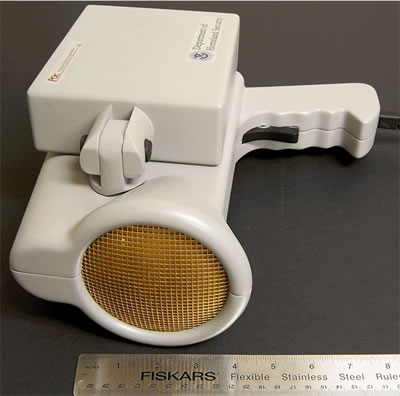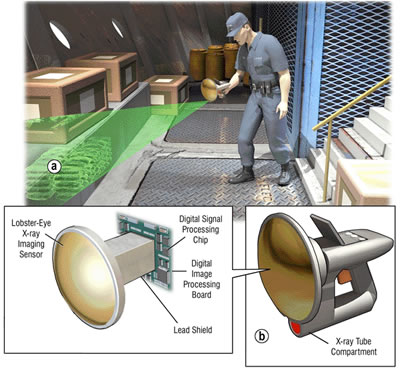Some victims believed that they are surveillanced by remote viewing "See through Wall" technologies. I sorted some "See through Wall" technologies here just for a starting to know some basic surveillance technologies.
These technologies are not 100% associated with mind reading, mind control abuses and tortures.
Current See Through Wall technologies
(1)Functional MRI
(2)Ultrasound pulse-echo imaging
Ultrasonic imaging is the second most often used imaging modality in medicine, as well as in military
(3) Ultra-Wideband (UWB)
is a technology for transmitting information spread over a large bandwidth (>500 MHz) that should, in theory and under the right circumstances, be able to share spectrum with other users. Regulatory settings of Federal Communications Commission (FCC) in United States are intended to provide an efficient use of scarce radio bandwidth while enabling both high data rate "personal area network" (PAN) wireless connectivity and longer-range, low data rate applications as well as radar and imaging systems.
(4) Infrared Xray
The infrared spectrum is over three thousand times wider than the visible spectrum (visible = 400nm to 700nm; infrared = 700nm to 1,000,000nm) and has substantially different properties depending on which part of the infrared spectrum you are at. The infrared spectrum is typically divided into four groups:
l Near-infrared (wavelengths of 700 nm to 1400 nm): Produced by objects that are glowing hot (light bulbs, the sun, fires). Most "night vision" cameras use this because the sensors are cheap (just stick a visible-light-blocking filter over a digital camera sensor) and because you can illuminate an area with IR-emitting LE Ds without anyone noticing. Most greyscale night images are using this part of the infrared spectrum. Glass is quite transparent to this, as are many lightweight fabrics (most notably, those used in swimsuits). Metal reflects it, and most opaque objects block it. If you assume it behaves like visible light, you usually won't be wrong.
l Mid-infrared (wavelengths of 1400 nm to 8000 nm): Produced by objects that aren't quite glowing hot (jet engines and the like). Used mostly by heat-seeking missiles.
l Long-wave or thermal infrared (8000 nm to 15,000 nm): Produced by objects that are at "reasonable" temperatures. This is the band that is used by heat-detecting cameras. These cameras are quite expensive, and need to be cooled down below the temperature of the environment (otherwise, they'd see themselves rather than the world around them). Most solid objects will block or smear the IR from objects behind them, while adding their own heat to the mix.
l Far infrared (15,000 nm to 1,000,000 nm): Produced by cold objects (think "liquid nitrogen" cold) and by specialized scientific equipment. Not much practical use.
Terahertz radiation (T-rays) sit uncomfortably on the border between infrared and microwaves. They're hard to produce and hard to detect, but most non-conductive objects (walls, clothing, etc) are transparent to them while most conductive objects (metal, the water in your body) reflect them. They're mostly a scientific curiosity right now already being used for airport security in a number of countries, and known as "nude scanners".
LEXID Sees Through Walls To Next Apartment
http://www.technovelgy.com/ct/Science-Fiction-News.asp?NewsNum=1369
The handheld LEXID 'Lobster Eye' X-ray Inspection Device allows the user to see through walls to hidden spaces beyond. The device is particularly well-suited to finding and examining the secret compartments and passages in your castle or other dwelling place.

(LEXID handheld sees through walls)
The LEXID device acquires and focuses backscattering photons from hidden objects that are irradiated by the beam coming from the device (a low power x-ray generator). The x-ray optic focusing enhances image resolution without using higher power x-rays (always a plus for people on the other side of the wall!).

(Here's how LEXID works)
Boffins are really getting out the options for looking through walls; see LifeReader Senses The Enemy Through Walls and DARPA Radar Scope Can Sense Thru Walls for details on other options.
I use some other sf devices as predecessors in the other stories; here's an amusing reference from a 1936 John W. Campbell story:
"They had the tube then. They called it the PTW tube - Probability Time Wave. They'd been trying to make a television set that would see through walls..."
(Read more)
This passage just goes to show that even seventy years ago, people were thinking about a device just like this one. Gordon Giles used a similar idea in his 1937 story Diamond Planetoid to see which planetoids where worth mining; take a look at the X-beam projector.
Via LEXID x-ray imaging device.
Scroll down for more stories in the same category. (Story submitted 12/21/2007)
Please go to LAST PAGE OF "Replies to this Discussion" to read NEWEST Information

Replies
Camero Tech Ltd., an Israeli company, markets a product that allows war fighters to envision the positions of people and objects located behind solid walls. The company’s Xaver 800 product is touted as a portable ISR
platform.
The product uses micro-power pulse radar technology to penetrate walls and has a range of 20 meters. “That means that even with a stand-off of 10 meters, you can still get a picture of what is 10 meters behind the wall,” said Josh Levontin, the company’s director of business development.
The cameras are able to transmit over a variety of networks, such as Wi-Fi and cellular networks.
The future of surveillance includes cloud technology, according to Buse. “It allows a user to plug into the Internet, log into an account, and have stream of surveillance that is not cost prohibitive,” he said.
The output of the sensors can be accessed wirelessly so that users can view the imagery on smartphones.
L-3’s VideoScout is a software application designed to run on commercial handheld smartphones and tablets powered by Google’s Android operating system.
“This technology saves lives,” explained David Gazelle, Vice President of R&D.
http://www.tactical-isr-technology.com/tisr-home/348-tisr-2011-volu...